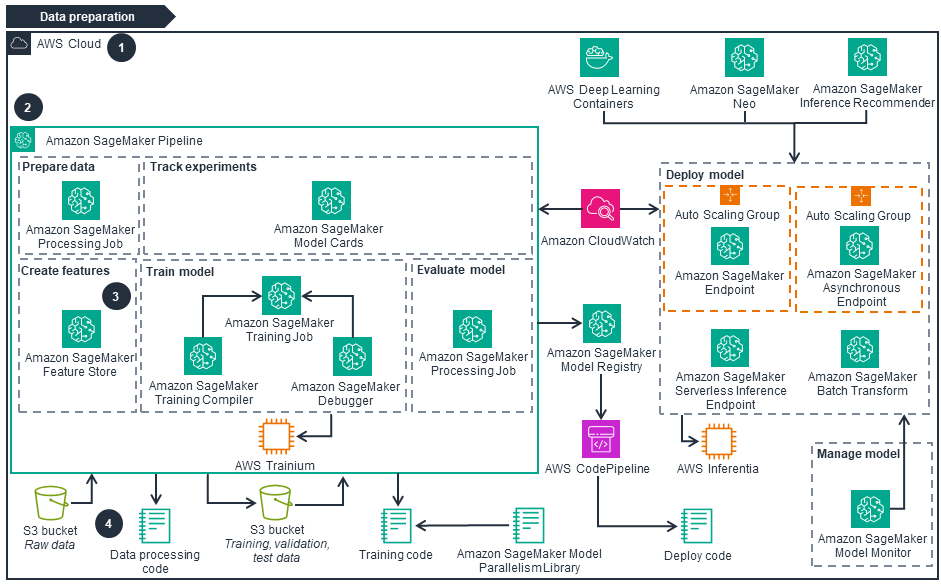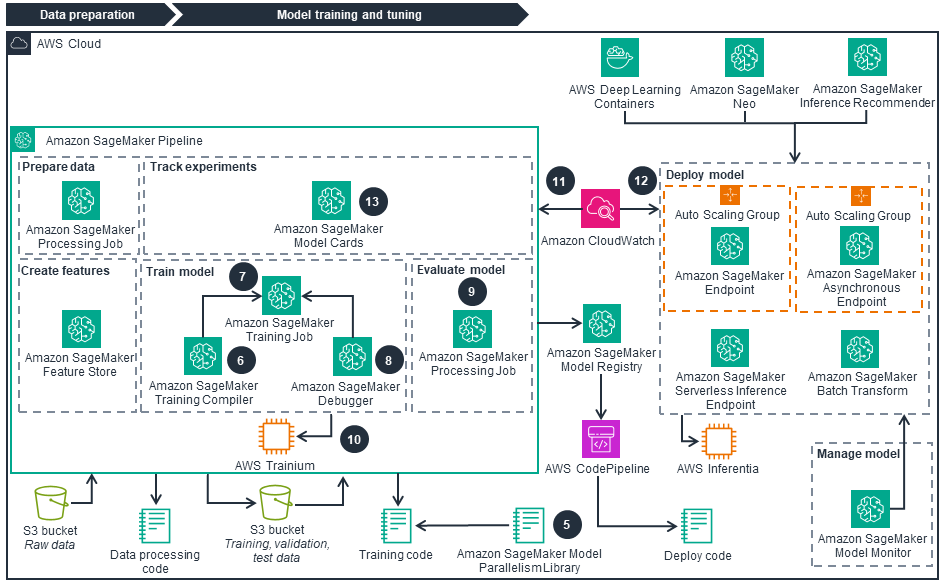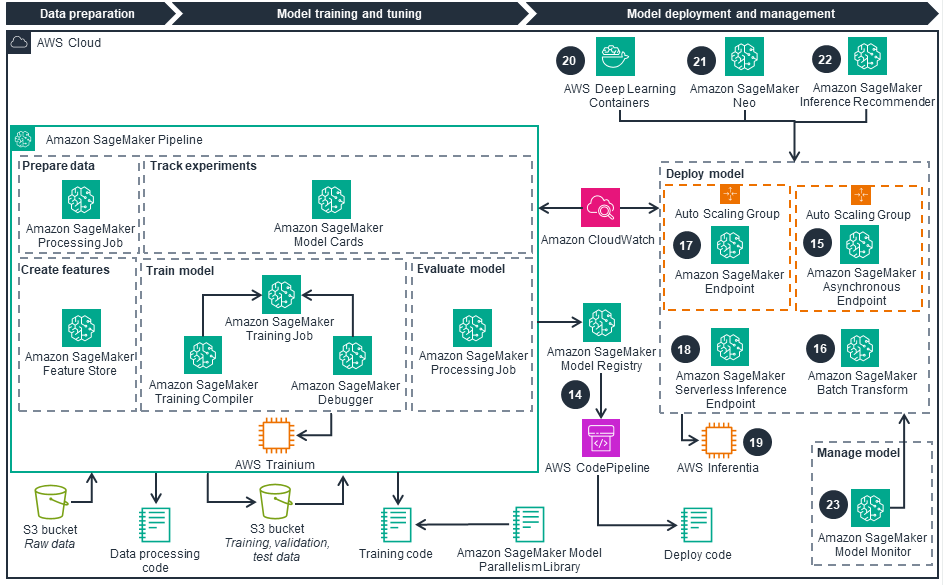- AWS Solutions Library›
- Guidance for Optimizing MLOps for Sustainability on AWS
Guidance for Optimizing MLOps for Sustainability on AWS
Overview
How it works
Data Preparation

Model Training and Tuning

Model Deployment and Management

Well-Architected Pillars
The architecture diagram above is an example of a Solution created with Well-Architected best practices in mind. To be fully Well-Architected, you should follow as many Well-Architected best practices as possible.
CloudWatch metrics and alarms monitor the health of model endpoints deployed on SageMaker hosting options, allowing you to record performance-related metrics, analyze metrics when events or incidents occur, establish KPIs to measure workload performance, and monitor and alarm proactively. Additionally, collecting and analyzing metrics for training jobs and inference environments using CloudWatch allows you to analyze workload health trends and conduct periodic workload metric reviews with your organization.
AWS Identity and Access Management (IAM) controls access to resources and managed services to help ensure least privilege access, secure the ML environment, and protect against adversarial and malicious activities. Data is encrypted at rest on Amazon Simple Storage Service (Amazon S3) and SageMaker Feature Store , both of which use AWS Key Management Service (AWS KMS) to protect sensitive data.
SageMaker allows automatic scaling of the model endpoint for reliable processing of predictions and to meet changing workload demands. It also distributes instances across Availability Zones in case an outage occurs or an instance fails. SageMaker Pipelines allows for versioned pipeline inputs and artifacts, and SageMaker Projects allows for versioned data processing code. This versioning helps you create a repeatable approach and retain data in case you need to roll back to a previous state.
We selected the services in this Guidance to improve performance without compromising on accuracy of training results. For example, managed ML services, such as SageMaker , deliver better performance through pre-optimized ML components. SageMaker Inference Recommender increases performance while reducing inference time. High-compute instances, such as Trainium and Inferentia , can accelerate inference speed.
SageMaker services have built-in features that help you optimize costs related to model training. For example, SageMaker Feature Store helps avoid the cost of storing and processing duplicated datasets. SageMaker Debugger allows you to stop a training job as soon as a bug is detected, saving costs associated with unnecessary training job executions. SageMaker Training Compiler reduces training time and costs on GPU instances. Serverless pipelines, SageMaker Asynchronous Endpoints , and SageMaker Batch Transform avoid the cost of maintaining compute infrastructure at all hours of the day.
SageMaker Serverless Inference Endpoints and SageMaker Asynchronous Endpoints use autoscaling groups to scale resources in response to demand. SageMaker Serverless Inference Endpoints scale endpoints down to zero when there are no requests. This minimizes unnecessary provisioned resources and reduces carbon emissions. Additionally, serverless technologies, such as SageMaker Serverless Inference Endpoints and SageMaker Pipeline help eliminate idle resources by not having to spin up servers.
Disclaimer
Did you find what you were looking for today?
Let us know so we can improve the quality of the content on our pages